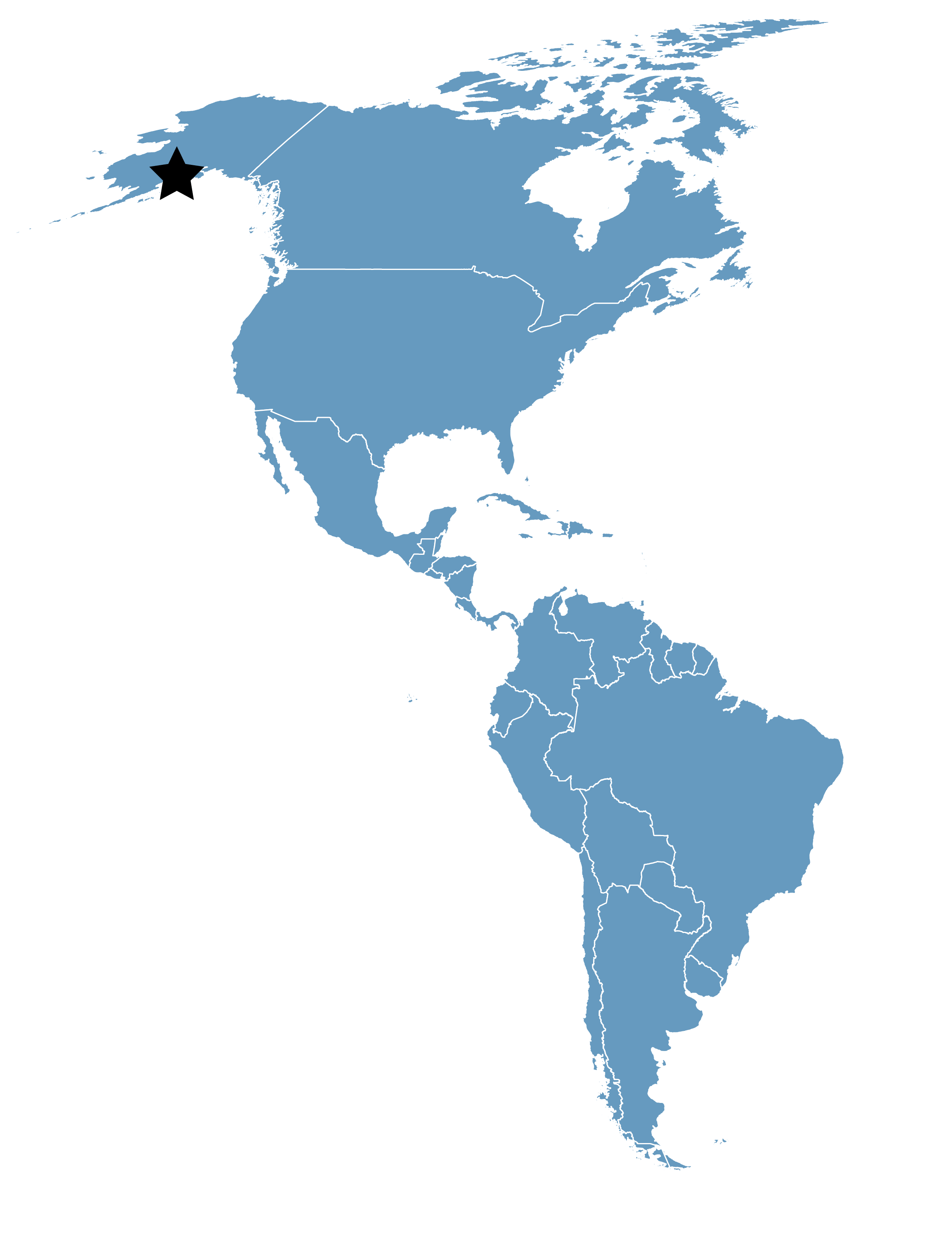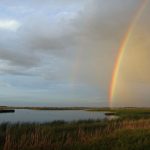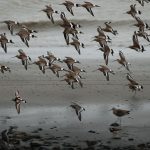Kachemak Bay
Location
Alaska, United States
Category
International
Basis for Designation
Supports more than 100,000 shorebirds annually.
Size
94,074 hectares (232,461 acres)
Date Designated
March 1995
Expanded April 2016
Site Owner
City of Homer
Alaska Department of Fish and Game
U.S. Fish and Wildlife Service
Site Partners
Alaska Maritime National Wildlife Refuge
Kachemak Bay National Estuarine Research Reserve (NOAA and ADFG)
Kasitsna Bay Laboratory (NOAA and University of Alaska Fairbanks)
Kachemak Bay State Park and State Wilderness Park
Audubon Alaska
Kachemak Bay Birders
Kachemak Bay Conservation Society
Cook Inlet Keeper
Homer Chamber of Commerce
Kachemak Heritage Land Trust
Pratt Museum
Overview
Kachemak Bay is a funnel-shaped fiord 40 miles long and 24 miles wide in the Cook Inlet region of southcentral Alaska. This beautiful collage of ocean, sandy and rocky beaches, spruce forests, rolling hills, and jagged mountains with blue glaciers supports an abundance and diversity of flora and fauna. Most of Kachemak Bay is undeveloped and its lands and water have extensive habitat protection. When Kachemak Bay was designated as a WHSRN site in 1995, the 7,260-acre site comprised of parcels on Homer Spit (Mud Bay and Mariner Park Lagoon, owned and managed by the City of Homer) and areas at the head of the bay (Fox River Flats Critical Habitat Area (CHA) and adjoining parts of Kachemak Bay CHA, owned by the State of Alaska and managed by Alaska Department of Fish and Game). In 2016 several areas were added to the WHSRN site: the Beluga Slough near the city of Homer, the entirety of Kachemak Bay CHA, and Sixty-Foot Rock, a small island owned by USFWS and an important wintering site for Rock Sandpiper and Surfbird.
Kachemak Bay’s 320 miles of shoreline and 30-foot tidal range create the substantial intertidal areas that attract some 36 species of shorebirds. The collection of worms, bivalves, crustaceans, and other organisms in the expansive intertidal mudflats provides rich feeding grounds for an extraordinary number of migrating shorebirds. The most numerous shorebird species is the Western Sandpiper; Dunlin and dowitchers are also prominent.
Kachemak Bay’s 320 miles of shoreline and 30-foot tidal range create the substantial intertidal areas that attract some 36 species of shorebirds.
In early May, birdwatchers travel from all over to Homer for its annual Kachemak Bay Shorebird Festival to celebrate the spectacular spring migration there. Festival participants can choose between over 50 different events, from advanced ornithology workshops, beginning backyard birding presentations, field trips and boat tours to arts events and children’s activities.
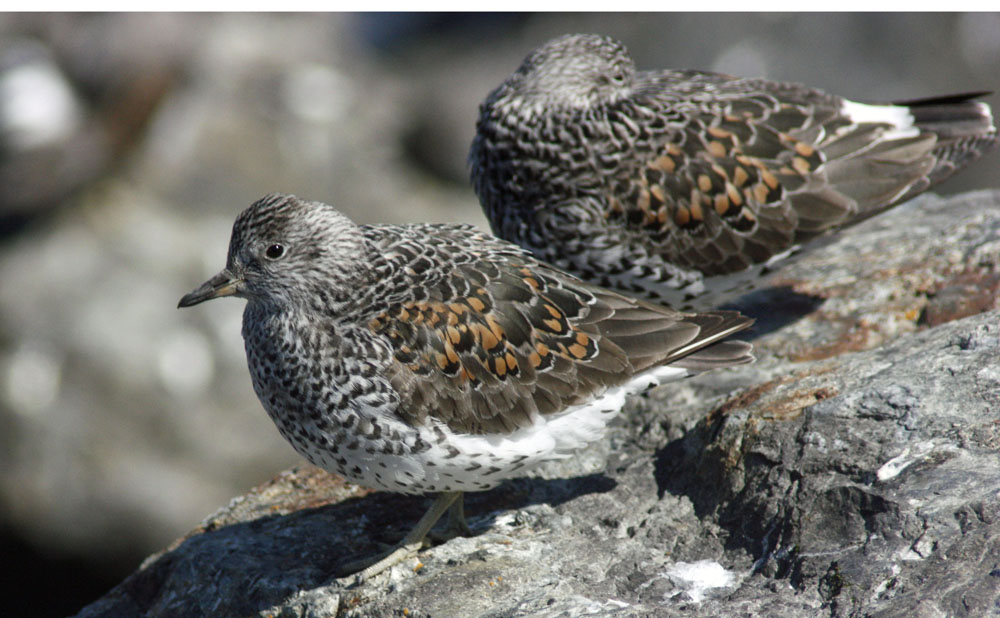
Surfbirds in spring migration. Photo: George Matz.
Ecology and Conservation
There are literally two sides to the Kachemak Bay story, as paraphrased below from the Kachemak Bay National Estuarine Research Reserve’s management plan:
The head of Kachemak Bay is characterized by extensive tidal flats, braided drainages, and marshlands. Beyond that, the northern and southern sides of the watershed have dramatically different geomorphology, geology, climate, vegetation, soil, and hydrology characteristics.
NORTH: gentle topography; much more extensive river systems; melting snow and rain drive the hydrologic system, including the Anchor River; rolling hills and gentle slopes are underlain by sedimentary rock; drier, flatter topography supports a mixed deciduous/conifer community transitioning to tundra; shoreline consists of cliffs, composed of sand and clay, leading down to shallow mudflats.
SOUTH: steep topography; glaciation limits the length of the rivers; early-summer snow melt and late-summer glacial melt influence the hydrologic system; jagged, glaciated peaks are underlain by ancient bedrock; wetter, steeper slopes (as a result of higher annual snow and rainfalls) support temperarate rain forest habitat; shoreline consists of hard rock cliffs and deep embayments. Many islands are also found along the southern shore.
The Homer Spit bisects the Bay into inner and outer zones that differ in freshwater influence and in wave action, having a dramatic impact on the Bay’s circulation. Water masses from these zones meet during the Bay’s daily tidal cycle.
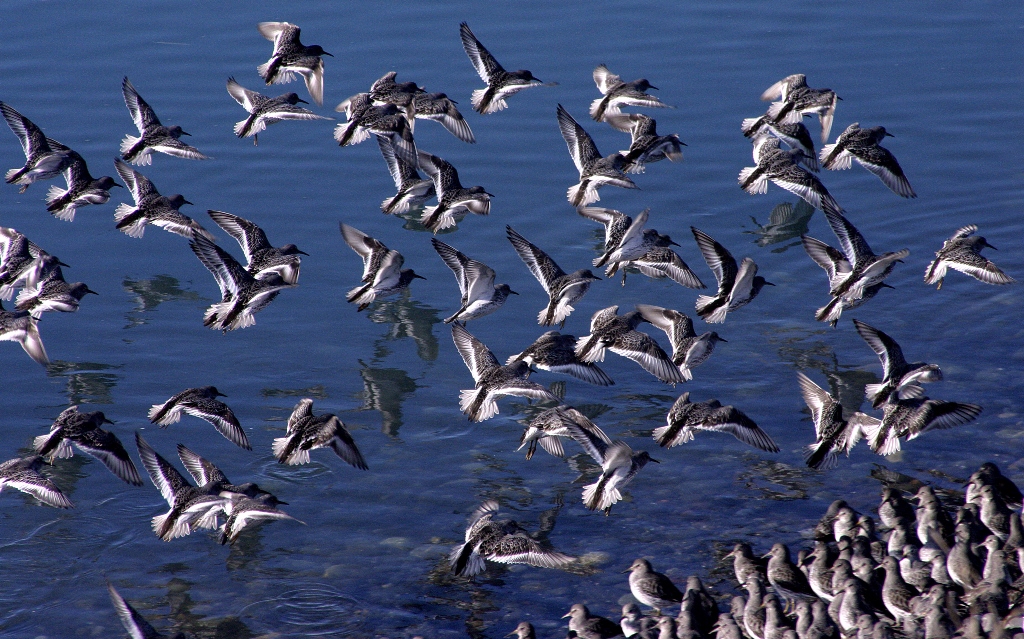
Rock Sandpipers in Flight. Photo: Kevin Co.
Shorebirds
Some 244 species of birds have been identified on and around Kachemak Bay, the most important marine bird habitat in Lower Cook Inlet. During winter months, over 90% of the the birds in the Inlet are found here. The bay’s inner coastline supports a total estimated density of 1,758 birds/km2 (679 birds/mile2) year-round. During spring migration, large flocks of sandpipers, Dunlin, plovers, dowitchers, godwits, yellowlegs, and Whimbrel prefer the inner Bay for its greater abundance of clams. Turnstones, Surfbirds, Black Oystercatchers, and Wandering Tattlers are attracted to the bay’s rocky islands, while large numbers of Red-necked Phalaropes are seen on the water.
Threats
Except for half of the Homer Spit, much of the shorebird habitat in Kachemak Bay has little disturbance from human activity. The Cook Inlet region receives a lot of geologic activity, however, that has and/or will alter intertidal areas. Although the Exxon Valdez oil spill occurred hundreds of miles from here, some oil did stain Kachemak Bay waters. Shipping poses possible threats to the bay, where the protected waters of the inner bay is considered a port of refuge for disabled and leaking ships. Foreign ships also frequently anchor in the bay with the potential of introducing invasive species.
Research
The Kachemak Bay area has significant scientific facilities to study and monitor its ecological condition. In Homer, the KBRR and the Alaska Maritime National Wildlife Refuge share a large facility and visitor’s center, State resource management agencies are present, and the University of Alaska Anchorage – Kenai Peninsula College has a campus. The University of Alaska Fairbanks and NOAA operate the Kisitsna Bay Lab on the south side of the Bay.
Resources
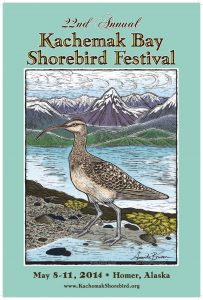
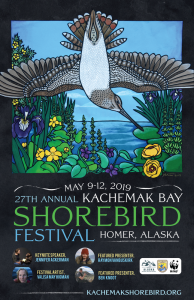
Kachemak Bay Shorebird Festival
Alaska’s largest wildlife viewing festival honors the return of spring and the breathtaking migration of shorebirds through Kachemak Bay.
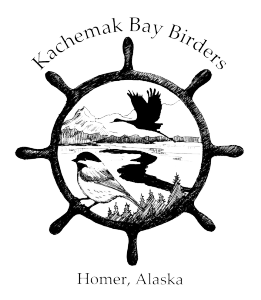
Kachemak Bay Birders
Kachemak Bay Birders, established in 2008, is an informal organization of individuals interested in birds, birding, and the conservation of birds.




